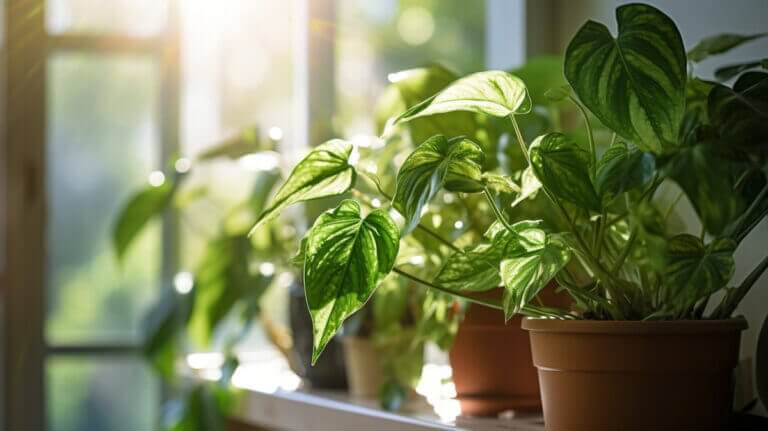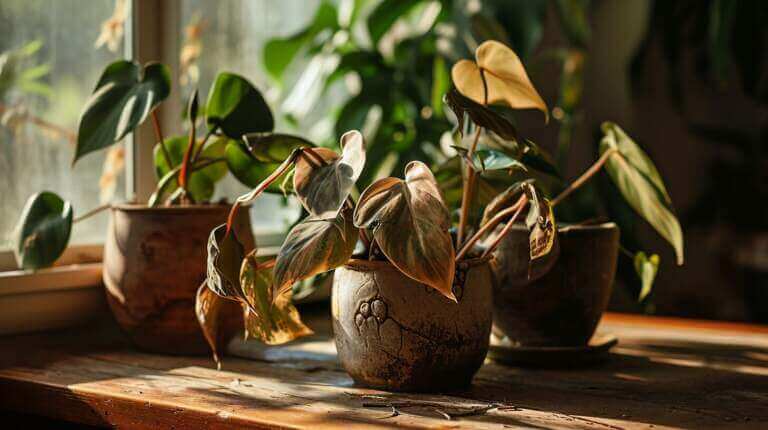A Beginner’s Grow And Care For Parlor Palm(Chamaedorea Elegans) or Neanthe Bella Palm Houseplants
Welcome to my beginner’s guide on how to grow beautiful parlor palm plants. Whether you’re new to gardening or just looking for a low-maintenance houseplant, the parlor palm is a perfect choice. With its lush fronds and air-purifying qualities, it’s sure to add a touch of greenery and elegance to your indoor space.
The parlor palm, also known as Chamaedorea elegans, is a tropical plant that thrives in bright, indirect sunlight and well-drained acidic to neutral soil. It can be grown as an indoor tree or even outdoors in the right climate, living for several decades. Not only is it visually appealing, but it also helps to purify the air and increase humidity levels in your home.
Key Takeaways:
- The parlor palm is a popular choice for beginners due to its low maintenance requirements.
- It thrives in bright, indirect sunlight and well-drained acidic to neutral soil.
- Parlor palm plants can live for several decades indoors and even longer outdoors.
- They are known for their vibrant, lush fronds and air-purifying qualities.
- The parlor palm is non-toxic to pets, making it a safe choice for households with animals.
The Benefits of Growing Parlor Palm Plants(Chamaedorea Elegans)
Parlor palm plants offer a range of benefits that make them an excellent choice for indoor decoration. These plants are not only visually appealing but also contribute to a healthier living environment. Here are some of the key benefits of growing parlor palm plants:
Air Purification:
Parlor palm plants are natural air purifiers, effectively filtering out toxins and impurities from indoor spaces. They remove harmful chemicals such as formaldehyde, benzene, and carbon monoxide, improving the overall air quality. This makes them an ideal choice for households with poor ventilation or those located in urban areas with high pollution levels.
Humidity Regulation:
In addition to purifying the air, parlor palm plants contribute to regulating humidity levels indoors. They release moisture through evapotranspiration, increasing the humidity in dry environments. This can be particularly beneficial during the winter months when indoor heating systems tend to dry out the air. By adding humidity, parlor palms help maintain a more comfortable and healthier living environment.
Non-Toxic and Pet-Friendly:
Parlor palm plants are non-toxic to pets, making them a safe choice for households with dogs, cats, or other animals. Pet owners no longer need to worry about their furry friends coming into contact with toxic plants that could potentially harm them. With parlor palms, you can enjoy the beauty of indoor greenery without compromising the safety of your pets.
Choosing the Right Conditions for Parlor Palm Plants(Neanthe Bella)
Proper care and attention to the conditions in which your parlor palm plants are kept are crucial for their health and growth. Here are some important factors to consider:
Light Requirements
Parlor palm plants thrive in bright, indirect light. While they can tolerate lower light conditions, they will grow best with medium to bright indirect light. Placing them near a north-facing window or a few feet away from a south-facing window can provide the ideal lighting conditions.
Temperature and Humidity
These plants prefer temperatures between 65°F and 75°F (18°C – 24°C). It’s important to avoid exposing them to cold drafts or temperatures below 55°F (13°C), as this can damage the plant. Additionally, parlor palm plants thrive in average humidity levels, so misting them occasionally or placing them near a humidifier can help create a suitable environment.
Soil and Potting
Parlor palms prefer well-drained, peaty soil-based potting mix with an acidic to neutral pH. It’s best to use pots with drainage holes to prevent waterlogging and root rot. When repotting, choose a container that is only slightly larger than the plant’s root system to prevent excessive moisture buildup.
| Light | Temperature | Humidity | Soil |
|---|---|---|---|
| Bright, indirect light | 65°F – 75°F (18°C – 24°C) | Average humidity | Well-drained, peaty soil-based potting mix |
Proper Watering and Soil for Parlor Palm Plants
Proper watering and soil are essential for the health and well-being of parlor palm plants. These plants have specific watering needs, and using the right soil mixture is crucial to their growth and development.
Watering Parlor Palm Plants
When it comes to watering parlor palm plants, it’s important to strike a balance. Overwatering can lead to root rot, while underwatering can cause the leaves to dry out. The general rule of thumb is to water the plant when the top inch of soil feels dry to the touch. This helps prevent waterlogged soil and ensures proper drainage.
It’s best to water the plant thoroughly, allowing the water to soak into the soil and reach the plant’s roots. Avoid letting the plant sit in standing water, as this can lead to root rot. Additionally, it’s important to avoid using hard water or water that contains high levels of chlorine or fluoride. These chemicals can harm the plant and affect its overall health.
Soil Requirements for Parlor Palm Plants
Parlor palm plants thrive in a well-drained potting mix that is rich in organic matter. A suitable soil mixture for these plants should be peaty and have an acidic to neutral pH. This helps mimic their natural habitat and provides the necessary nutrients for healthy growth.
A recommended soil mixture for parlor palms is one part peat moss, one part perlite, and one part garden soil. This combination provides good drainage while retaining enough moisture for the roots. It’s important to avoid using heavy or compacted soils, as they can hinder root growth and water absorption.
When repotting parlor palm plants, ensure the new pot has drainage holes and use the same soil mixture. Repotting should be done every 2-3 years or when the plant has outgrown its current pot. Be gentle with the roots to avoid damage, as parlor palms have sensitive root systems.
Fertilizing and Pruning Parlor Palm Plants
Fertilizing and pruning are important aspects of caring for parlor palm plants to ensure their healthy growth and appearance. Here are some tips to help you properly fertilize and prune your parlor palm:
Fertilizing
Parlor palm plants are slow growers and do not require frequent fertilization. However, providing them with the right nutrients can promote their overall health. It is recommended to use a balanced liquid fertilizer diluted to half strength. Apply the fertilizer once or twice a month during the growing season, which is typically spring and summer. Avoid overfeeding the plant as it can lead to nutrient burn. Always follow the instructions on the fertilizer packaging for the best results.
Pruning
Parlor palms generally do not require much pruning, but removing dead or yellowed fronds can help maintain the plant’s aesthetics. Use clean and sharp pruning shears to snip off any fronds that are completely brown or damaged. Make sure not to remove more than 20% of the plant’s foliage at once to avoid undue stress. Regular pruning also allows the plant to allocate energy to the growth of new fronds. Trim the fronds close to the base of the plant, being careful not to damage the healthy foliage.
| Benefits of Fertilizing Parlor Palm Plants | Pruning Tips for Parlor Palm Plants |
|---|---|
|
|
Common Pests and Diseases for Parlor Palm Plants
Parlor palm plants, although relatively low maintenance, can still be susceptible to a variety of pests and diseases. Taking proactive measures to prevent and control these issues is key to keeping your plants healthy and thriving.
Pests
One common pest that can affect parlor palm plants is the spider mite. These tiny pests are difficult to detect but can cause significant damage by sucking the sap from the plant’s leaves. Other pests that may infest your parlor palm include aphids, mealybugs, and scale. Regular inspection of your plant’s foliage can help you identify any signs of infestation and allow for prompt action.
To control pest infestations, you can try using organic solutions such as neem oil or insecticidal soaps, which are effective against many common houseplant pests. For severe infestations, you may need to resort to chemical pesticides, but be sure to follow the instructions carefully to avoid harming your plant or the environment.
Diseases
Parlor palm plants can develop root rot and fungal leaf spots if they are overwatered or placed in poorly-drained soil. Root rot occurs when the roots are constantly wet, leading to decay and eventual plant death. Fungal leaf spots manifest as small dark or yellow spots on the leaves, and if left untreated, can spread and cause significant leaf damage.
To prevent these diseases, it’s crucial to provide proper drainage for your parlor palm plants and avoid overwatering. Ensure that your plant’s pot has drainage holes, and allow the top inch of soil to dry out between waterings. If you notice signs of root rot or fungal leaf spots, you may need to remove the affected parts of the plant and adjust your watering practices to prevent further issues.
| Pest or Disease | Signs and Symptoms | Prevention and Control |
|---|---|---|
| Spider Mites | Tiny webs on leaves, stippling or discoloration, leaf drop | Regularly inspect leaves, use organic insecticides like neem oil or insecticidal soaps |
| Aphids | Sticky residue on leaves, stunted growth, curling leaves | Remove infested leaves, use natural predators like ladybugs or organic insecticides |
| Mealybugs | Cottony masses on leaves and stems, yellowing or distorted growth | Physically remove bugs with a cotton swab soaked in alcohol, use natural predators or insecticidal soap |
| Scale | Shiny, sticky residue on leaves, yellowing or stunted growth | Physically remove scale insects with a cotton swab soaked in alcohol, use insecticidal soap |
| Root Rot | Wilting, yellowing and mushy roots | Ensure proper drainage, avoid overwatering, use well-draining soil |
| Fungal Leaf Spots | Small dark or yellow spots on leaves, leaf discoloration and damage | Remove affected leaves, adjust watering practices, provide good air circulation |
Propagating and Repotting Parlor Palm Plants
When it comes to propagating parlor palm plants, division is the key. This method allows you to separate the existing plant into multiple smaller plants, each with its own root system. To do this, carefully remove the plant from its pot and gently separate the root mass into individual sections. Make sure each section has a good amount of roots and at least one frond. Plant each division in a new pot with well-draining soil, and water thoroughly.
As for repotting, it’s important to choose a container that is slightly larger than the plant’s root system. Parlor palms prefer to be slightly root-bound, so there’s no need to go overboard with a large pot. Before repotting, gently loosen the roots to encourage new growth and better absorption of nutrients. Place the plant in the new pot, ensuring it is centered and at the same depth as before. Fill in any gaps with fresh soil and water generously.
It’s crucial to handle repotting and propagating with care, as parlor palms have sensitive root systems. Too much disturbance can shock the plant and impede its growth. Remember to only repot when necessary, typically every 2-3 years, to give the plant enough time to acclimate to its new container. With proper propagation and repotting techniques, your parlor palm plants will continue to thrive and bring beauty to your indoor space.
FAQ
When should I water my parlor palm plant?
Water your parlor palm plant when the top inch of soil feels dry. Avoid overwatering to prevent waterlogged soil.
What kind of light does a parlor palm plant need?
Parlor palm plants thrive in bright, indirect light. They can adapt to lower light conditions but grow best with medium to bright indirect light.
How often should I fertilize my parlor palm plant?
It is recommended to use a balanced liquid fertilizer once or twice a month during the growing season. Be cautious not to overfeed the plant.
How do I propagate a parlor palm plant?
Parlor palm plants can be propagated through division. When repotting, choose a container with good drainage and a size slightly larger than the plant’s root system.
What pests are common for parlor palm plants?
Parlor palm plants can be susceptible to pests such as spider mites, aphids, mealybugs, and scale. Regularly inspect the plant for signs of infestation and take appropriate measures to control pests.
How often should I repot my parlor palm plant?
Repotting should be done when necessary, typically every 2-3 years. Choose a container with good drainage and repot with care, as parlor palms have sensitive root systems.







